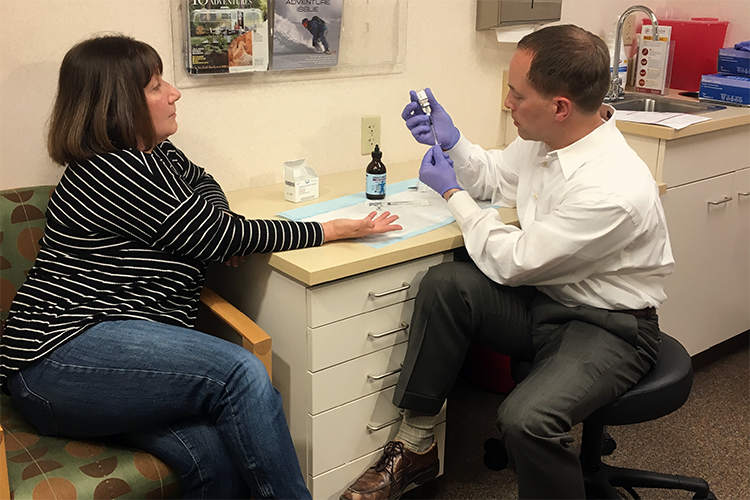
Recently, the medical community has seen an increase in the use of wide-awake local anesthesia for hand and wrist surgery procedures. Wide-awake local anesthesia is surgery performed with only local anesthesia, avoiding the use of general anesthesia. This avoids all the downsides, risks, and costs associated with regular anesthesia and is much safer for patients with health problems. The technique is formally known as wide-awake local anesthesia, no tourniquet (WALANT).
The Procedure
Before the procedure takes place, patients may take anti-anxiety medications if they wish, but no formal sedation is required for surgery. Injections are given to the patient using a small needle and injecting slowly, typically injecting areas that are already numb to minimize discomfort. Bicarbonate is placed in the solution to decrease the normal pain of an injection. The patient will typically wait 5-30 minutes for the numbing solution to reach maximum efficacy before they are taken to the operating room, where the procedure will be performed. If patients want to watch their surgery they are able to do so, but if they don’t want to watch a drape will be put in place, and patients can listen to music or even take a nap. The wide-awake anesthesia typically provides 6-8 hours of complete pain relief, and sometimes even up to 24 hours of pain relief.
Pre-surgery benefits of wide-awake local anesthesia:
- No need for an EKG, chest x-ray, or preoperative blood test.
- No need to get undressed for surgery.
- No need to fast prior to surgery.
- No IV is necessary.
- A safer option for patients with heart, lung, or other medical conditions.
During and after surgery benefits of wide-awake local anesthesia:
- No grogginess or other side effects of general anesthesia.
- Ability to watch surgery if desired.
- Ability to receive and remember education about surgery, postoperative rehab, and expected results.
- Surgeon can actively test tendon repairs at the time of surgery to confirm good results before the patient leaves the operating room.
- Patient is able to drive him or herself home after surgery if necessary.
Common surgeries performed with wide-awake local anesthesia:
- Endoscopic carpal tunnel release
- Trigger finger release
- De Quervaine’s release
- Thumb arthritis surgery
- Olecranon bursal surgery
- Most finger surgeries
- Wrist fractures
- Proximal row carpectomies
- Partial wrist fusions for arthritis
- Ulnar nerve decompression
- Shortening osteotomies





